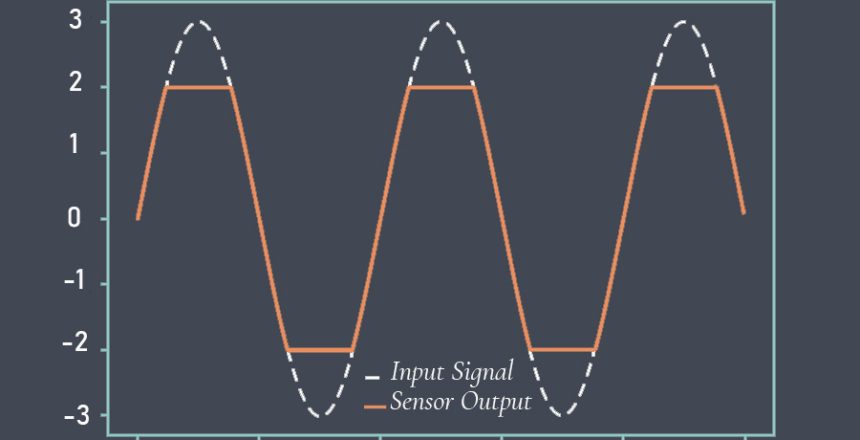The full-scale input and output of a sensor refer to the maximum input and output values that the sensor can measure or produce, respectively, while maintaining its specified accuracy and performance.
Sensor full-scale input
The full-scale input of a sensor is typically defined as the maximum value of the physical parameter being measured that the sensor can detect and convert into an electrical signal within its specified accuracy limits. For example, the full-scale input of a temperature sensor might be defined as the highest temperature that the sensor can accurately measure, while the full-scale input of a pressure sensor might be defined as the maximum pressure that the sensor can accurately detect.
Sensor full-scale output
The full-scale output of a sensor is typically defined as the maximum electrical signal that the sensor can produce in response to the full-scale input. For example, a temperature sensor might produce a voltage signal that varies linearly with temperature, with a full-scale output of 5 volts corresponding to the full-scale input temperature. Similarly, a pressure sensor might produce a current signal that varies linearly with pressure, with a full-scale output of 20 milliamps corresponding to the full-scale input pressure.
Is sensor full scale range (FSR) and the full-scale input and output of a sensor the same?
A sensor’s FSR (Full-Scale Range) and its full-scale input and output are not the same thing, although they are related.
The FSR of a sensor refers to the range of the physical quantity that the sensor can measure or detect, from the minimum to the maximum value. It is typically specified in the units of the physical quantity being measured, such as volts, ohms, or pressure units. For example, the FSR of a force sensing resistor (FSR) could be specified as 0 to 10 Newtons.

The full-scale input and output of a sensor, on the other hand, refer to the maximum input and output values, respectively, that the sensor can measure or produce while maintaining its specified accuracy and performance. The full-scale input is typically defined as the maximum value of the physical quantity being measured that the sensor can detect and convert into an electrical signal within its specified accuracy limits, while the full-scale output is typically defined as the maximum electrical signal that the sensor can produce in response to the full-scale input.
In some cases, the FSR of a sensor may be the same as its full-scale input or output, but this is not always the case. For example, an FSR may be specified as a range of forces, but the full-scale input and output of the sensor may be specified in terms of voltage or current. In this case, the FSR would need to be converted to the appropriate input or output range using the sensor’s sensitivity or transfer function.
The relationship between sensor sensitivity, full-scale input and output, and resolution
The sensitivity, full-scale input and output, and resolution of a sensor are all related to each other.
Sensitivity refers to the ability of a sensor to detect small changes in the input signal and convert them into corresponding changes in the output signal. It is typically expressed in units of output signal per unit of input signal. A more sensitive sensor will produce a larger output signal for a given change in the input signal than a less sensitive sensor.
Resolution refers to the smallest change in the input signal that a sensor can detect and convert into a corresponding change in the output signal. It is typically expressed in units of input signal per digit of output signal. A higher resolution sensor will be able to detect smaller changes in the input signal than a lower resolution sensor.
Full-scale input and output refer to the range of input and output signals that a sensor can handle. For example, a temperature sensor may have a full-scale input range of -50 to 150 degrees Celsius, and a full-scale output range of 0 to 5 volts. The full-scale input and output ranges are important because they determine the maximum and minimum values that can be measured by the sensor.
The relationship between these parameters can be summarized as follows:
A more sensitive sensor will produce a larger output signal for a given change in the input signal.
A larger full-scale input range allows the sensor to measure a wider range of input signals.
A larger full-scale output range allows the sensor to produce a larger output signal for a given input signal.
A higher resolution sensor will be able to detect smaller changes in the input signal and produce a more precise output signal.
In general, a sensor with high sensitivity, wide full-scale input and output ranges, and high resolution is desirable because it allows for a wider range of input signals to be accurately measured and converted into corresponding output signals. However, the specific requirements for sensitivity, full-scale input and output, and resolution will depend on the specific application and the desired level of accuracy and precision.

